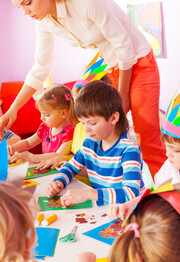Fire Hazards in Kindergartens: Crucial Tips for Fire Safety
In the hustle and bustle of a kindergarten environment, one crucial aspect that is easily taken for granted is fire safety. With numerous potential fire hazards lurking within these lively spaces, it becomes imperative for teachers, parents, and administrators to be equipped with an essential process to mitigate any risks.
Ensuring the safety of young children is paramount. Therefore, prioritizing fire safety in kindergarten settings requires proactive implementation strategies.
Fire Safety in Kindergartens
Here are some of the most common fire hazards found in kindergartens and how you can enhance fire safety measures within educational institutions. We also encourage a review of and focus on teaching about home fire hazards to ensure the safety of our children in all settings.
Crucial Safety Tips:
- Electrical Fire Hazards
- Storage and Handling of Flammable Materials
- Safety Drills and Emergency Procedures
- Adequate Fire Extinguishers and Alarms
By understanding these invaluable tips for fire safety, we can ensure that our little ones are protected from harm while they embark on their exciting journey of early education.
1. Identifying and Managing Electrical Fire Hazards
Identifying and managing electrical fire hazards is the first step in ensuring the safety of children in kindergarten environments. With numerous potential fire risks present, teachers, parents, and administrators need to be equipped with knowledge on how to mitigate these dangers. Common electrical fire hazards found in schools may include faulty wiring, overloaded outlets, and malfunctioning appliances.
To enhance fire safety measures within educational institutions, it is important to prioritize regular inspections of electrical systems and equipment by qualified professionals. Teachers should also receive training on how to recognize signs of electrical hazards such as flickering lights or unusual sounds from electronic devices.
Additionally, implementing strict policies regarding the use and maintenance of electrical equipment can help minimize the risk of fires caused by negligence or misuse. Overall, detecting electrical fire hazards requires a proactive approach that includes education, regular inspections, and proper maintenance protocols.
2. Implementing Fire Safety Drills and Emergency Procedures
Implementing fire safety drills and emergency evacuation plan procedures is a required part of ensuring the safety of children in any school environment. Systematically conducting fire drills can familiarize both staff and students with evacuation procedures, helping them to calmly and efficiently evacuate in the event of a real fire.
These drills should be practiced at different times of the day to ensure that all children are prepared, regardless of when a fire may occur. For young children new to school, it’s a good idea to notify them when the first fire drill of the year will take place. This way it won’t come as a shock and cause fear and panic. Subsequent drills throughout the year can be conducted at random times without notice, but kids will be familiar with what is happening.
In addition to fire drills, it is important for teachers and administrators to have well-defined emergency procedures in place, including protocols for notifying emergency services and safely accounting for all children.
3. Ensuring Proper Storage and Handling of Flammable Materials
Proper storage and handling of flammable materials is critical in maintaining fire safety. Flammable materials, such as cleaning agents, paints, glues, and fuels should be stored in designated areas away from heat sources or ignition points. Teachers and staff must be aware of these hazardous substances and ensure their proper storage. Storage areas where flammable materials accumulate should be monitored to ensure they are kept tidy.
Regularly inspect the condition of flammable material containers to check for leaks or damages that could lead to accidents. Adequate ventilation should also be provided in storage areas to prevent the accumulation of flammable vapors.
Furthermore, educate teachers, parents, and administrators about safe handling practices for flammable materials. This includes using only approved containers for storing these substances and ensuring they are tightly sealed when not in use. By implementing these measures diligently, kindergartens can greatly reduce the risk of fires caused by flammable materials.
4. Creating a Fire-Safe Environment with Adequate Fire Extinguishers and Alarms
Another important aspect of creating a fire-safe environment is ensuring that there are adequate fire extinguishers and alarms installed throughout the school. Fire extinguishers should be easily accessible and regularly maintained to ensure their effectiveness in case of emergency. Moreover, having working smoke alarms placed strategically can provide an early warning system in case of any potential fires.
Fire blankets have also been proven effective to safely put out small fires on stoves or in a science lab. By prioritizing the establishment of a comprehensive fire security measures that includes necessary equipment as well as effective training programs, kindergartens can create a secure learning environment.
Fire Safety Summary
Fire safety in kindergarten settings requires proactive implementation strategies, such as regular fire drills and a safety plan with well-defined emergency procedures. Practice ensures adults and kids alike understands escape routes and helps to ingrain this knowledge for everyone involved.
Educating all parties about potential hazards specific to these environments is crucial for mitigating risks effectively. The role of administrators to ensure warning systems and fire extinguishers ensures small fires can be put out immediately.
By consistently maintaining safe facilities and providing ongoing training on fire safety awareness for teachers and janitorial staff, kindergartens can create a secure environment where children’s well-being remains top of mind.





